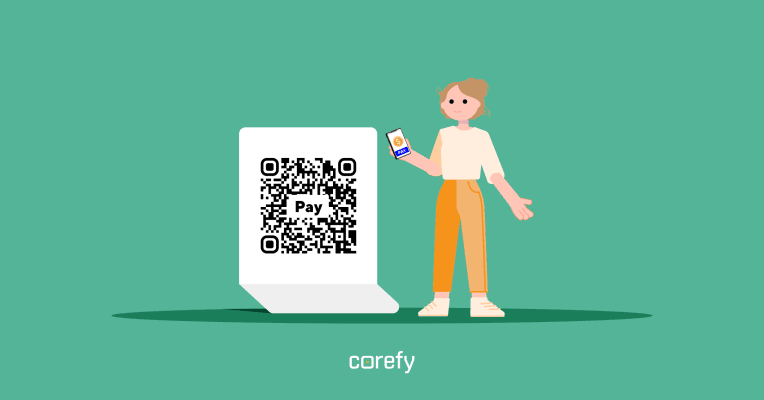
Alternative payment methods, also known as local payment methods, help make more goods and services accessible to more people worldwide in a world that is more connected thanks to contemporary technology.
Additionally, many companies are becoming more willing to accept payment methods other than cash or credit cards. How did APMs grow to be so well-liked by customers and businesses worldwide? Why do you think they’re crucial, especially in e-commerce? Who gains the most from these innovative methods of making purchases of goods and services?
Investigate alternative payment options and learn how they influence sectors, including finance and e-commerce.
What are Alternative Payment Methods (APM)?
Alternative payment methods (APMs) are modern ways to pay for products and services that have been purchased. They substitute for more traditional payment options like cash or large credit cards.
Typical instances of Alternative payment methods include:
- Prepaid cards
- Bank transfers
- Digital wallets
- Cryptocurrencies
- Loyalty programs
- Local cards
- Delayed payment and installment options
The pandemic has accelerated customers’ adoption of alternate payment options.
The use of cash has decreased in the US, and this trend is likely to continue as contactless or digital payment options become more prevalent. For instance, it is anticipated that by 2025, digital wallets will increase by 85%, going from a total of $5 trillion in expenditures in 2020 to more than $10 trillion in 2025.
The ease and security they provide are why digital wallets, software, or hardware that allows users to conduct electronic payments, are so popular.
The use of alternative payment methods is expanding globally. Consider Germany as an example. PayPal is preferred by 57% of German consumers when making online purchases.
According to a Consumer Payments Survey conducted in 2019, Australians are still embracing alternative payment options, namely electronic ones. In the same year, contactless card payments increased by 50%.
Additionally, iDEAL, a Dutch-only online payment option, was used to settle the bulk of Dutch consumers’ online purchases in 2019 (60 percent). The iDEAL was used to pay for 70% of online purchases in 2021.
Despite being referred to as “alternative,” several marketplaces have started publicly embracing payment methods, such as digital wallets, buy-now-pay-later plans, and direct debit payments, making aternative payment methods increasingly common. Paying with a digital or mobile wallet, for instance, accounts for 58.4% of all payment methods in the Asia Pacific Region, whereas using a credit card only accounts for 20.1% of all payment methods.
Even while the saying “cash is king” still has some truth in current times, businesses must change to meet changing consumer demands that are partly influenced by technology. You’re making your company more available to your clients by looking into other payment methods for transactions.
Unable to accept alternative payment methods is equivalent to building a wall around your company for merchants. This obstacle makes it more difficult for customers to use your products or services and support your company. Loss may result as a result of this.
Alternative Payment Method Types

Alternative payment methods come in a variety of forms and are currently used all over the world.
The most well-liked ones are:
- Digital wallets.
Consumers can use e-wallets, sometimes digital wallets, to conduct contactless payments.
Your coupons, boarding passes, tickets, gift cards, and loyalty cards can all be kept in a digital wallet with your credit and debit cards.
You no longer need to carry a wallet with physical cards or cash while using digital wallets. Digital wallets include, for instance, Cash App, Samsung Pay, Venmo, PayPal, and Alipay.
While digital wallets are popular, not all merchants accept them as payment methods.
- Mobile payments
Your smartphone is used to complete mobile transactions. Customers can load money onto their favorite mobile payment app and then use it to pay for transactions by SMS, QR code, and online.
Among the frequently utilized mobile applications are Google Pay; Quickbooks, Apple Pay; Square Cash; Xoom; Go Payment; PayPal; Alipay.
- Bank transfers
Online bank transfers, or wire transfers, allow you to pay for online purchases by sending money directly from your bank account to a business’s bank account.
You can pay for online purchases by sending money straight from your bank account to a business’s bank account through online bank transfers, sometimes known as wire transfers.
- Direct debit payments
This alternative payment method is typically used for recurring payments for subscription-based services. Customers permit businesses to deduct a predetermined sum of money from their bank accounts regularly.
- Payment installments
With this alternate payment mechanism, customers can order products or services online and pay for them later. Frequently, financing solutions are available to obtain installments.
The buy-now-pay-later (BNPL) technique of payment installments is one of the most popular ones. With BNPL, customers can pay for their item in full later or take advantage of monthly installments.
The well-known BNPL services are PayPal, Afterpay, and Klarna (available only for users with approved credit).
- Local cards
Local cards are prepaid or debit cards intended for use locally. Because it enables the localization of payments, this Alternative payment method is well-liked. Businesses can expand into new international markets and satisfy local demand by providing cards.
- Cryptocurrencies
Decentralized digital currencies known as cryptocurrencies are quickly gaining popularity as an alternate approach. Yes, a lot of cryptocurrencies exhibit volatility. However, Bitcoin attracts a lot of interest from e-commerce business owners, especially those who want access to more secure transactions.
Cryptocurrencies and stablecoins, digital currencies tied to fiat currencies, are anticipated to play a significant role in banking and online payments during the next few years.
What Roles Do Alternative payment methods Play in Ecommerce?

In e-commerce, alternative payment mechanisms are frequently employed. Alternative payment methods were once considered excellent, but now they are essential for enterprises.
This is because they offer more ease and security for online transactions. Alternative payment methods provide ecommerce merchants with less payment friction, which customers frequently view as a major turnoff. Due to inefficient or challenging payment methods, many customers are giving up on their online purchases. Consumers may conduct a transaction with just a few clicks, thanks to alternative payment methods like Klarna.
Additionally, a lack of trust and few payment choices is one of the most frequent causes of cart abandonment. Not all consumers feel comfortable using their cards to make online purchases. Customers feel more secure when given trustworthy alternative payment options.
Additionally, denying customers access to their preferred payment method frequently causes them to abandon their shopping carts. Your conversion rates could suffer as a result. To offer such alternative payment methods, it is essential to identify the preferred payment methods used by your target market.
APMs can also assist you in providing cross-border payments to your global clientele if you’re trying to extend your e-commerce business.
Consumers of today desire to have access to services that are quick and flexible. Giving your consumers various payment options allows them to pick how they wish to pay you. Customers may stop patronizing your company if you can’t meet their requests.
Advantages of Alternative Payment Methods
The biggest winners from alternative payment methods are not only the consumers. Businesses of all sizes can profit from these payment methods:
- Potential savings
Your profit margins may be impacted by credit card processing costs, which can become very expensive. Businesses can eliminate or reduce use costs by using APMs. The transaction costs incurred each time customers use their credit or debit card can also be reduced.
- Increased sales
You reduce the likelihood of cart abandonment by giving customers the choice of how to pay for their products. You can take payments from customers in other countries by using APMs.
- Seamless checkout experience
Customers may be discouraged from completing their purchases if there are issues at any stage of the transaction process. APMs can streamline payment procedures, reducing the barriers to consumer transactions.
- Better customer experience
Consumers now have more freedom to pay for the goods they desire, even if they don’t use their credit or debit cards for more expensive transactions. APMs like Klarna gives clients easy access to reasonable financing for their purchases.
- More robust security for your business
Consumers and businesses alike are concerned about the urgent issue of cybersecurity. Payment security difficulties are one of the causes of cart abandonment by customers. Customers may be required to submit their username and password while using certain APMs, which adds a layer of protection. APMs use facial ID or fingerprint recognition, just like digital wallets, which can lower the risk of fraud.
Utilizing Other Payment Options to Improve Your Operations
How can you choose the best alternative payment method for your business, given the overwhelming number of options available? Consider price, features, functionality, and security while searching for APMs you can sell.
Additionally, be sure that:
- Recognize your target market, mainly if you’re operating in a new area.
Even working inside the exact location, remember that consumer preferences frequently fluctuate between distinct territories. Using data, local knowledge, and skills to find pertinent insights for a specific place.
- Stay on top of customer expectations.
Prioritize learning what your clients anticipate from payment options. Would members of your target market be more inclined to prefer making payments in installments, or would they like to use digital wallets to get quick and easy checkout?
- Know your business.
Even if several APMs available, not all of them will work for your company’s needs. Consider your target market, the nature of your transactions, and your budget while looking for the finest APMs for your company.
Your bottom line may be impacted by the higher transaction costs associated with some APMs. Although APMs provide more convenience and flexibility, keep in mind that they cannot always ensure that your company won’t have high levels of client attrition.
APMs are fantastic since you may employ multiple methods for your company. If your company operates in the US, you can accept payments through PayPal or Venmo. Boost, GrabPay, or OVO Wallet are a few alternative payment methodsyou can utilize if you’re expanding to Southeast Asia.
Conclusion
The payment environment is evolving. New payment methods are emerging and are here to stay; they are frequently more practical and secure than traditional ways. APMs are giving today’s customers and retailers more influence. APMS give customers a choice to choose how they want to pay.
Offering different payment options is something to think about if you want your company to expand, whether locally or internationally. As a result, you may see an increase in revenue, fewer fraud incidents, increased customer trust, and the ability to satisfy shifting consumer expectations.

Pingback: Top 5 List of Alternative Payment Methods - Dropship Success Tips